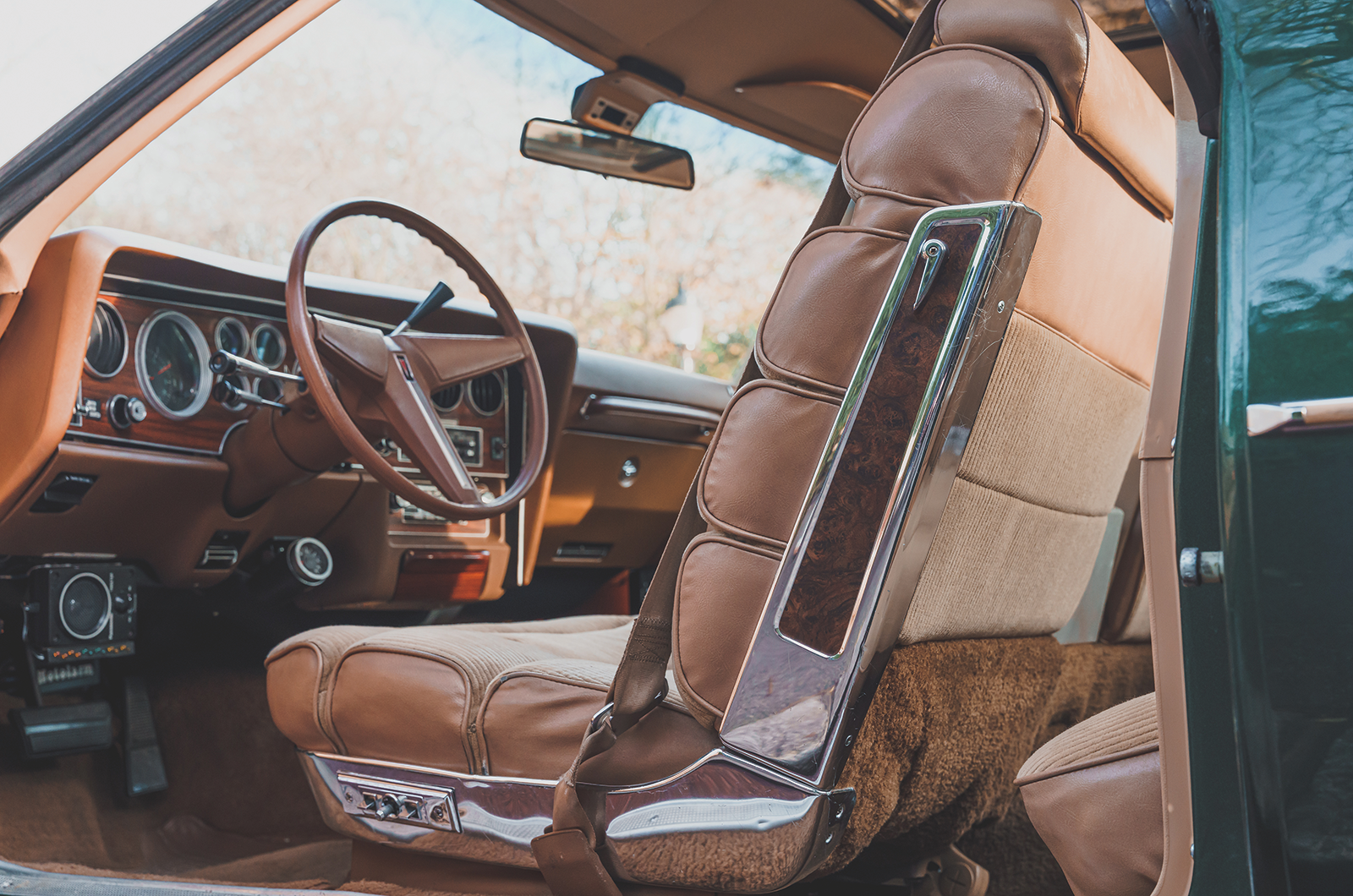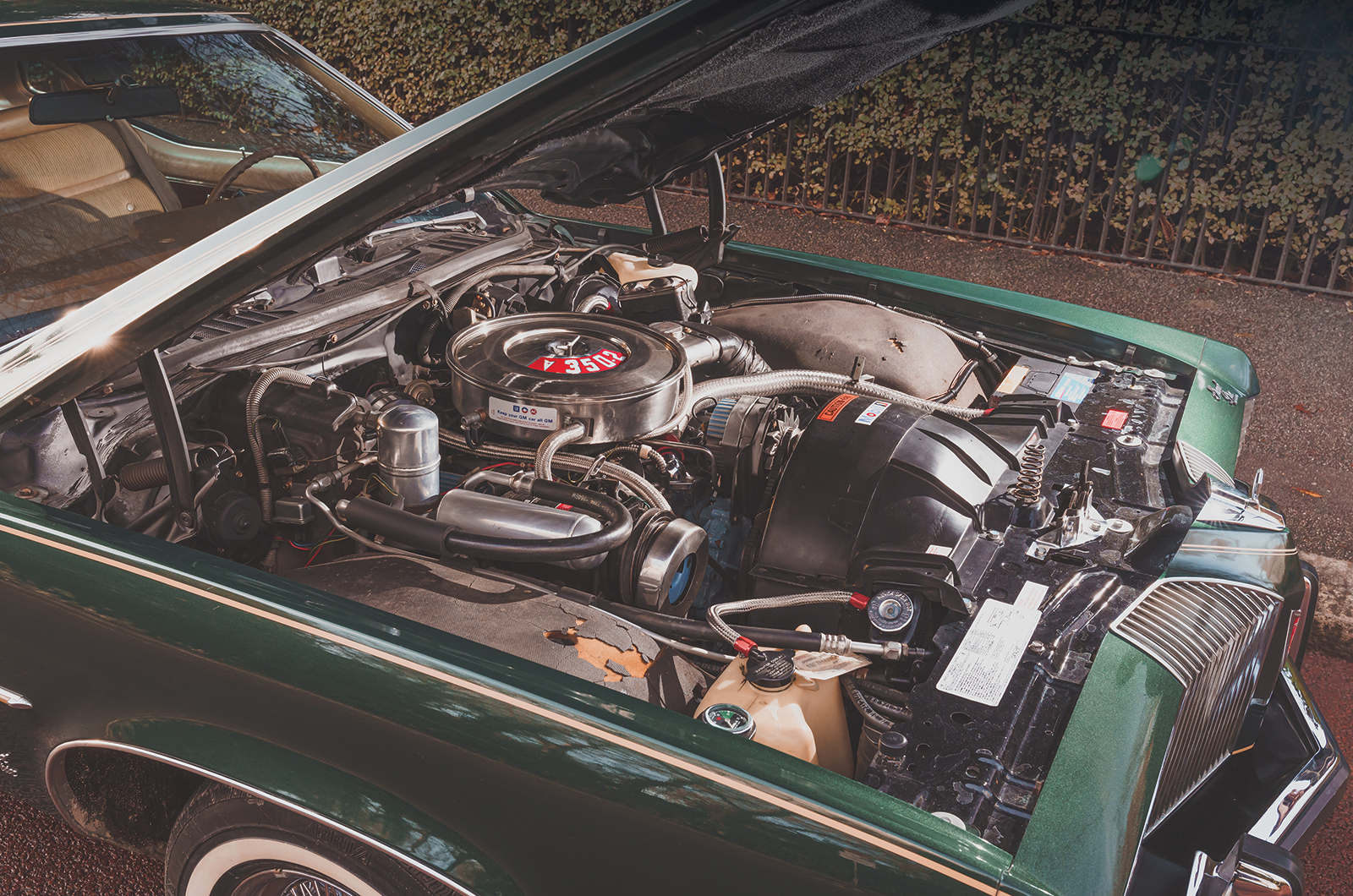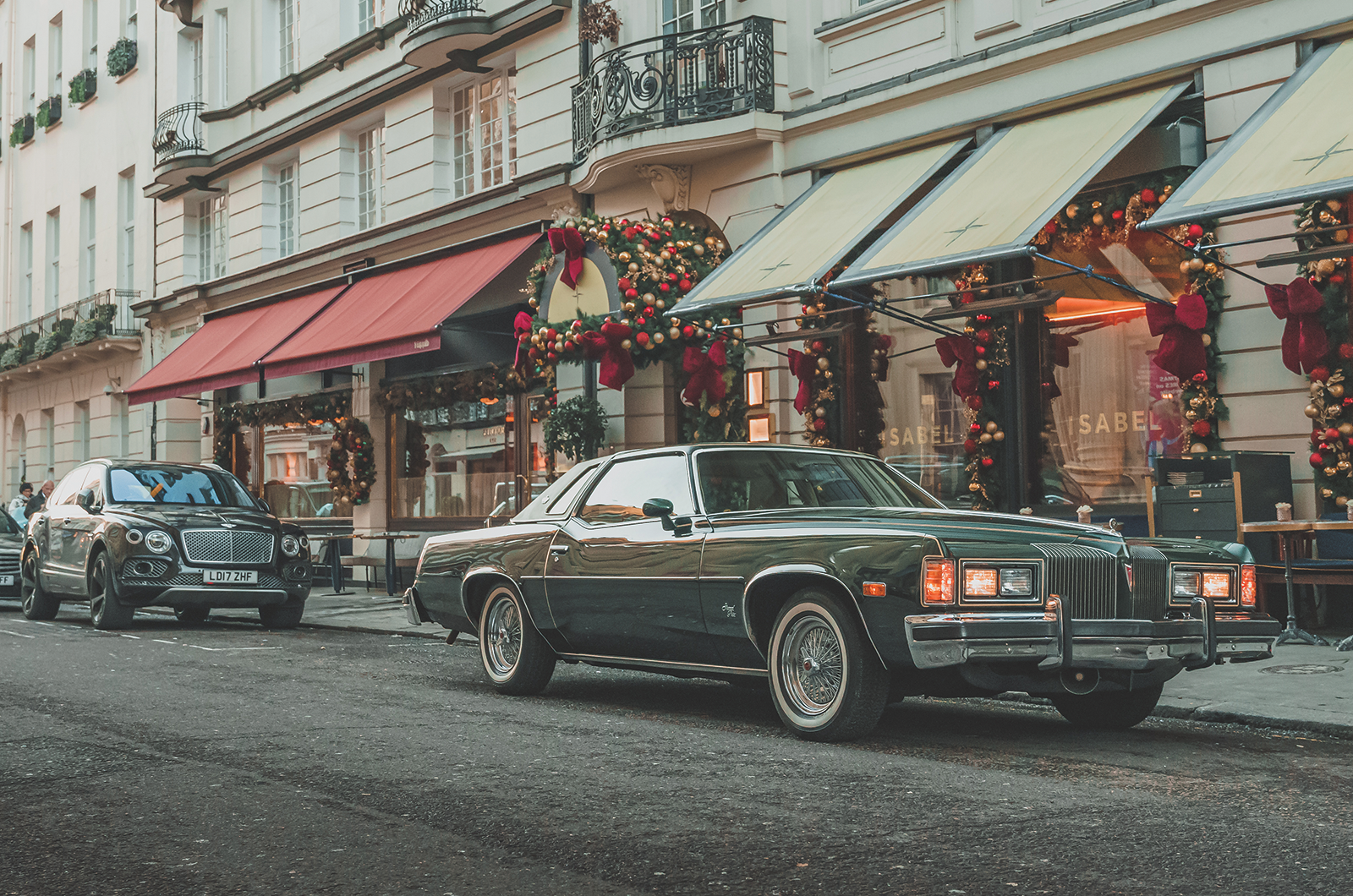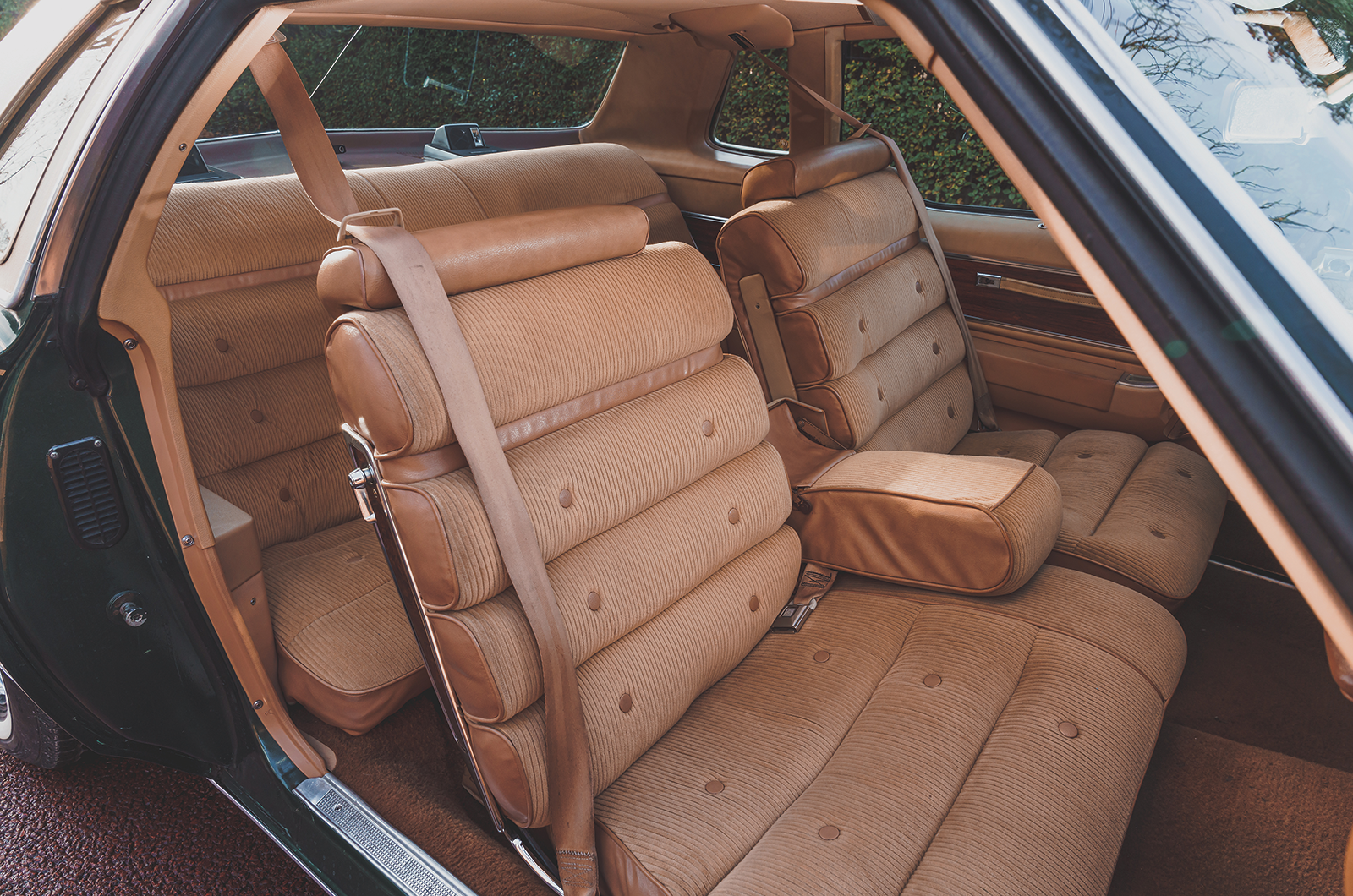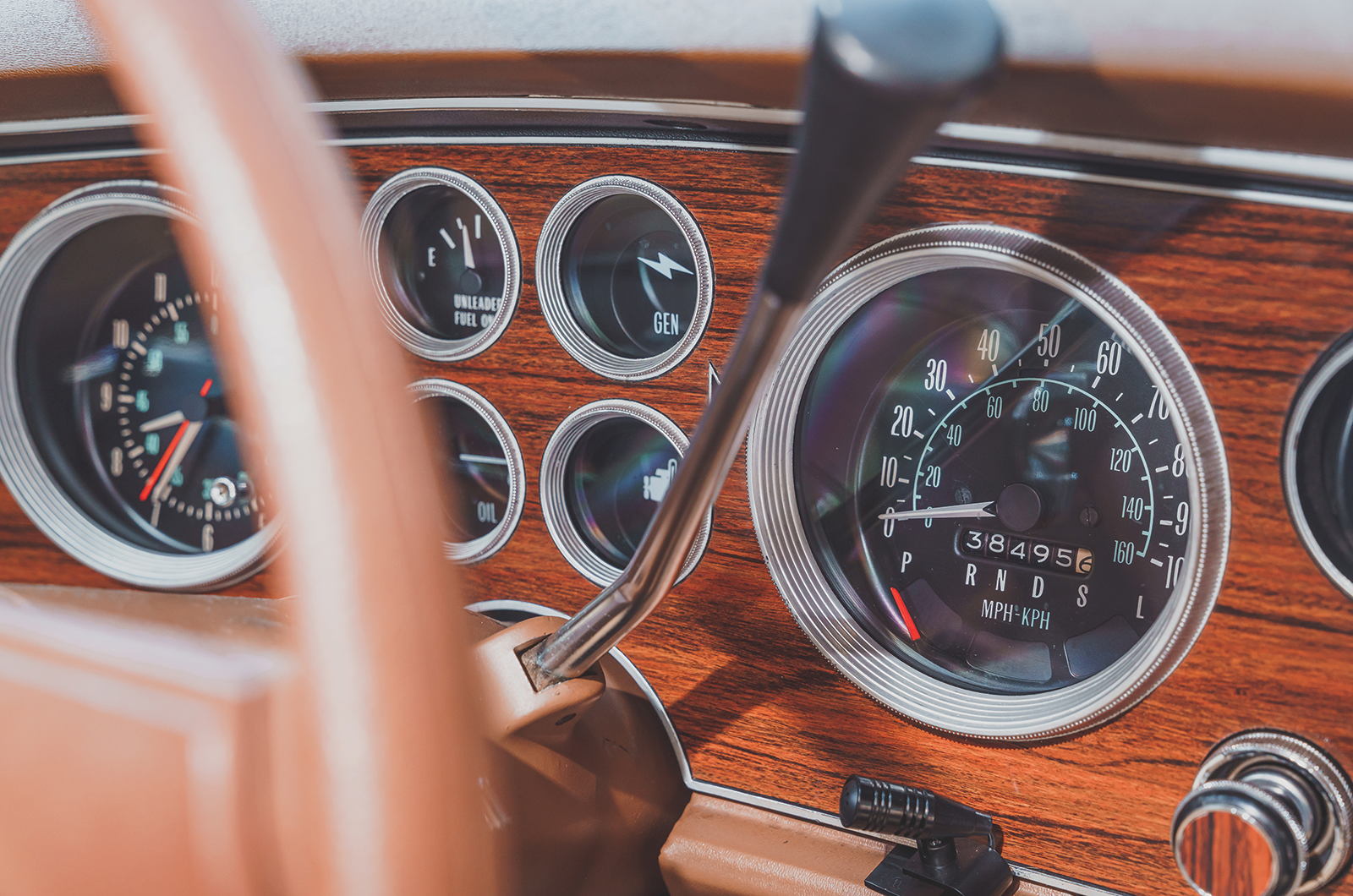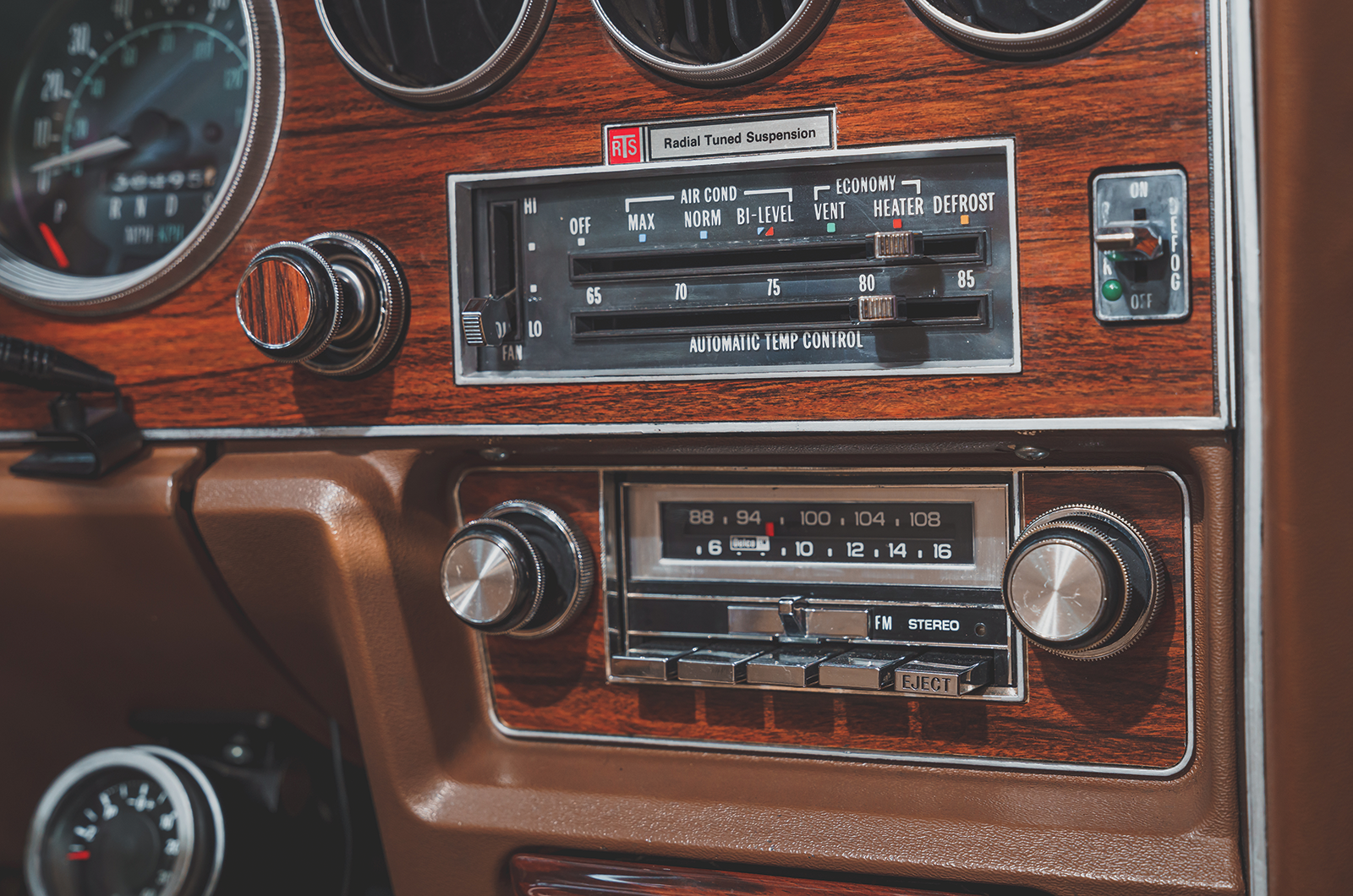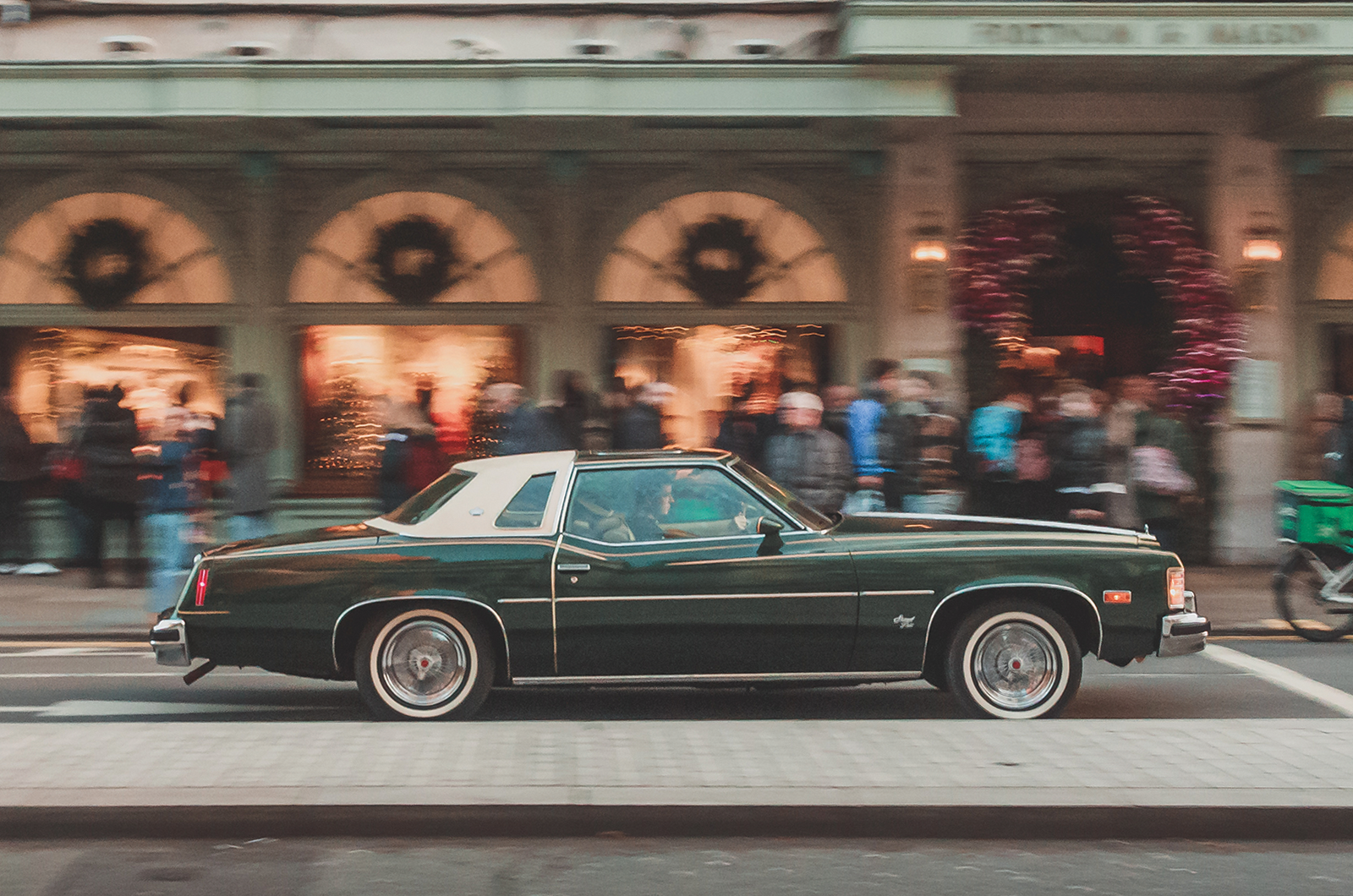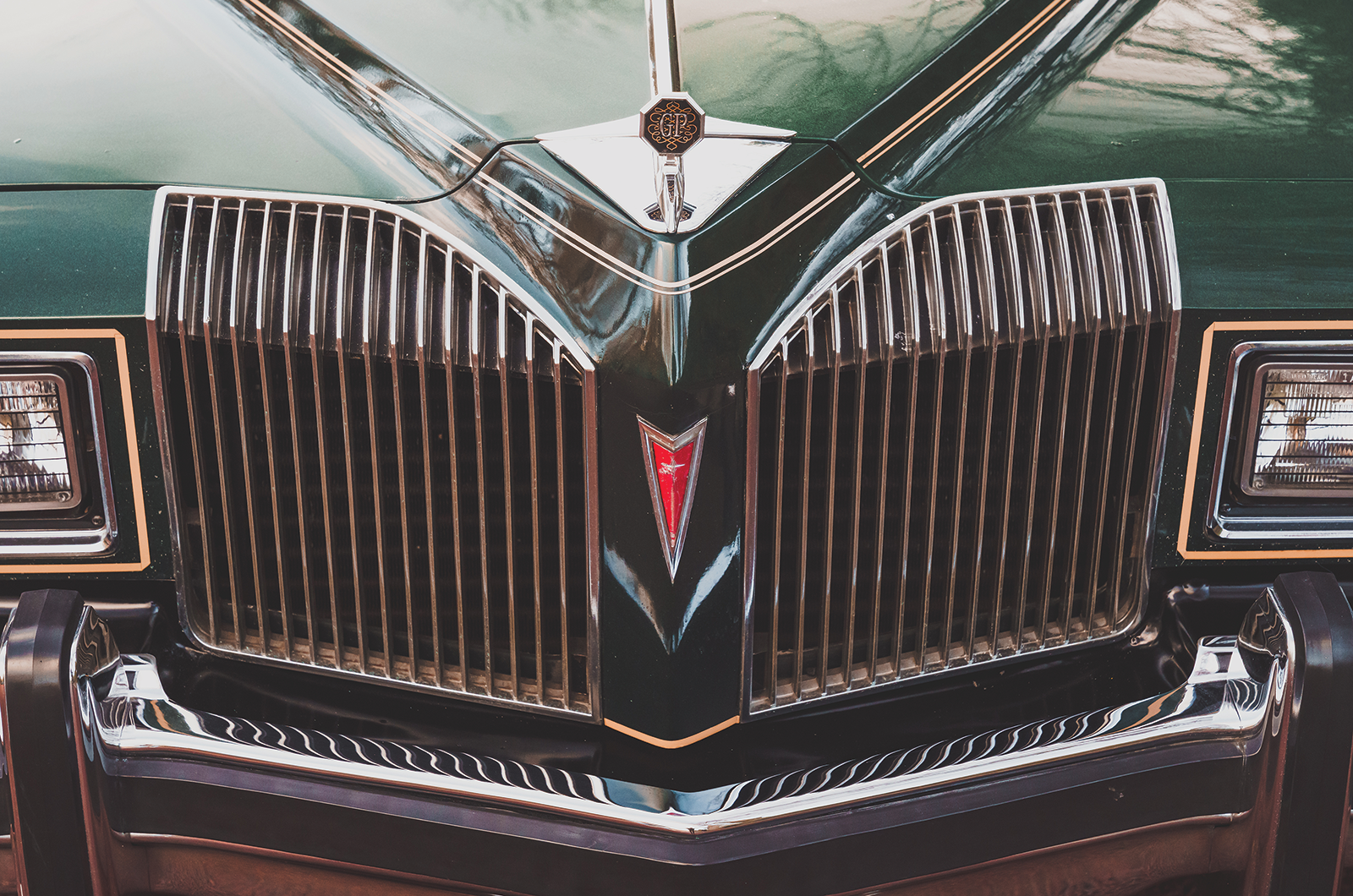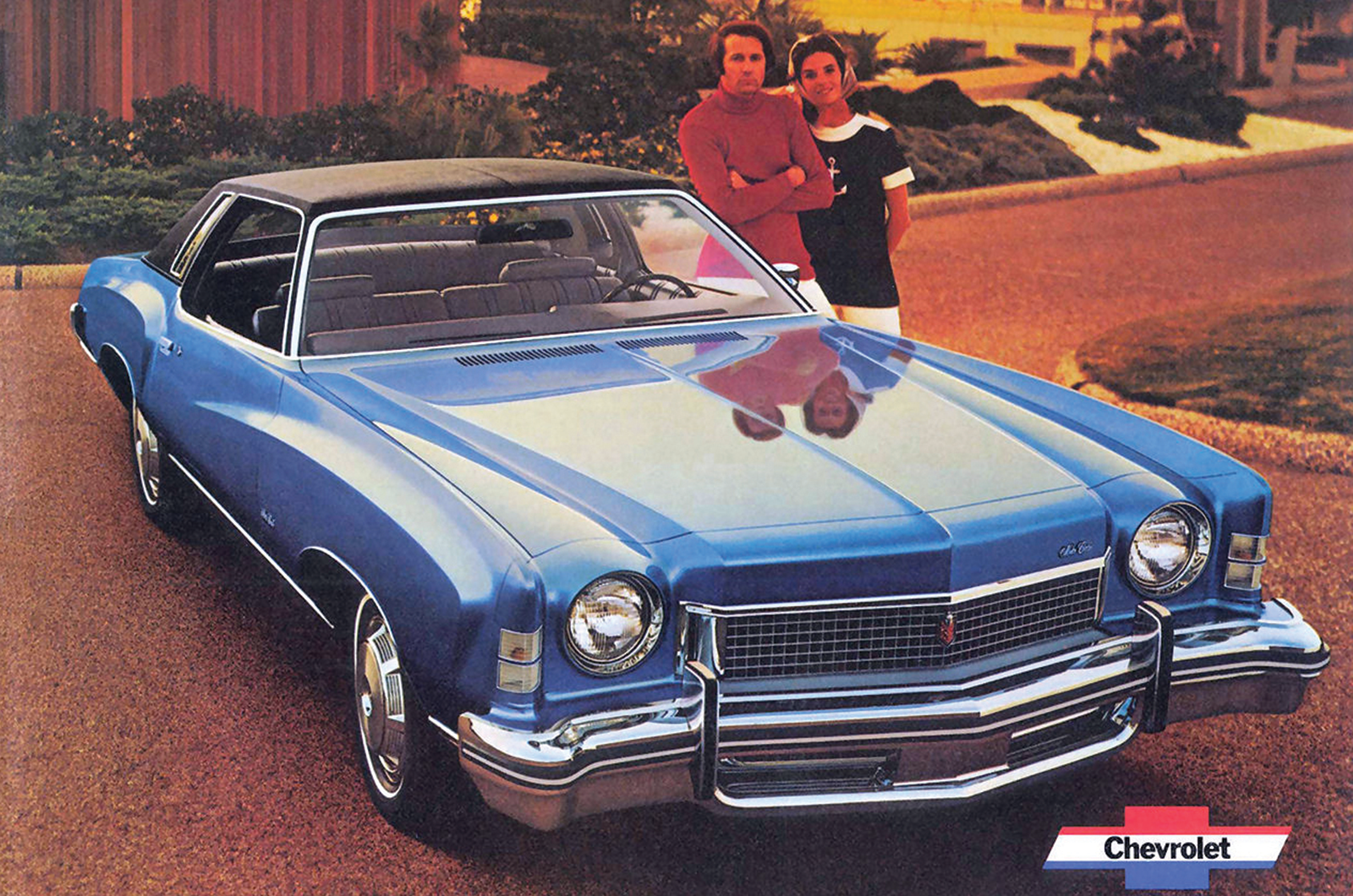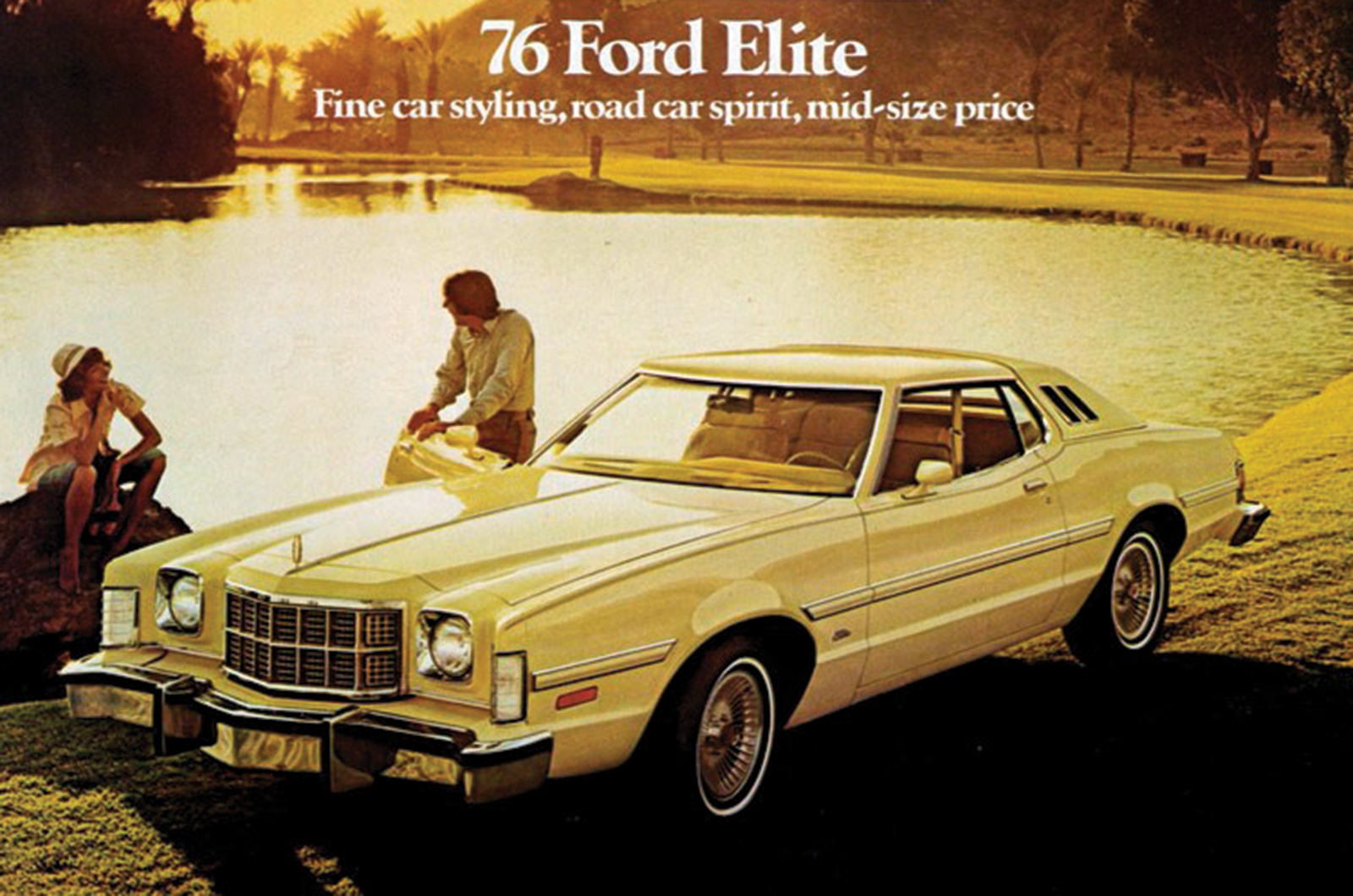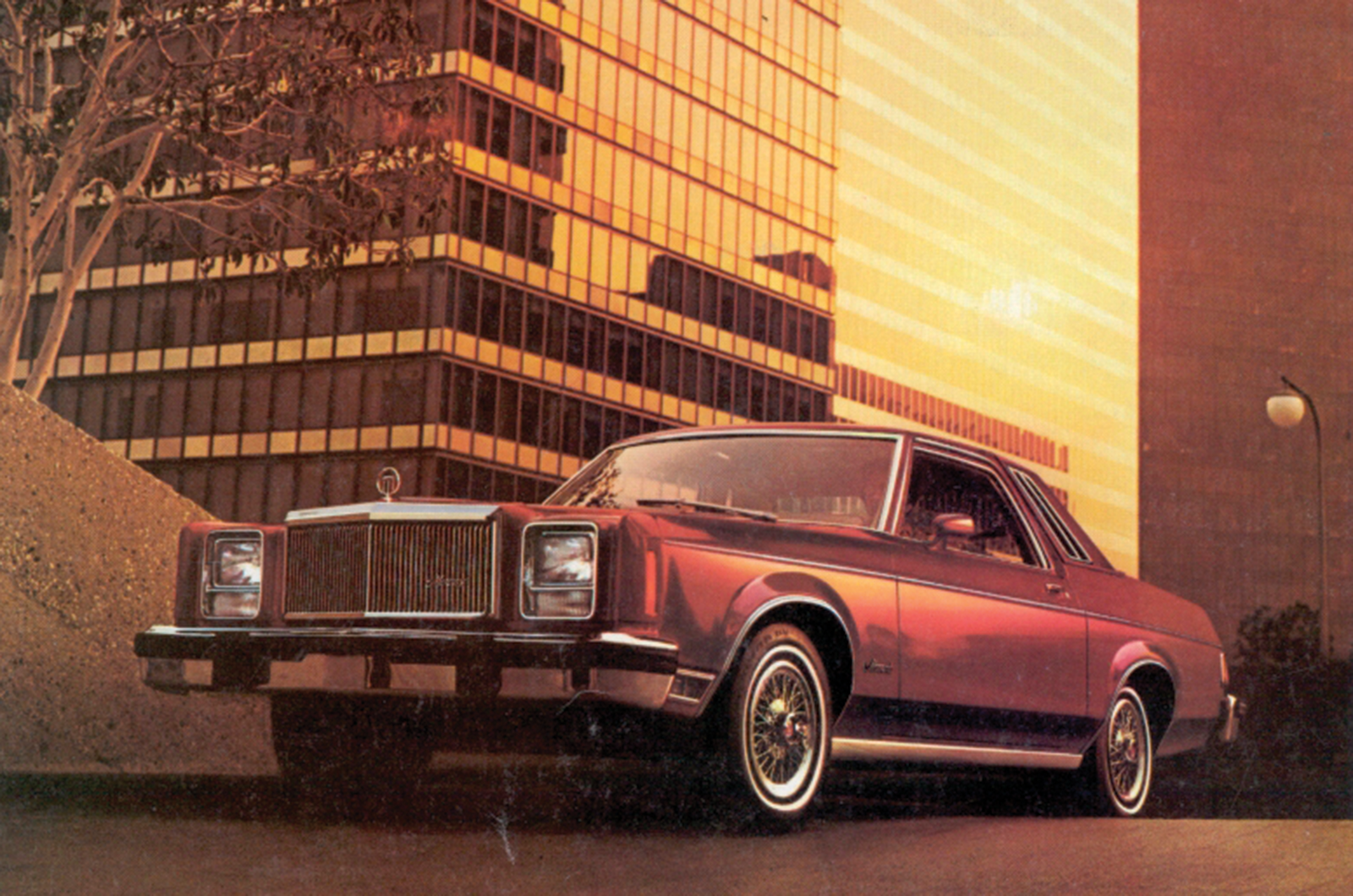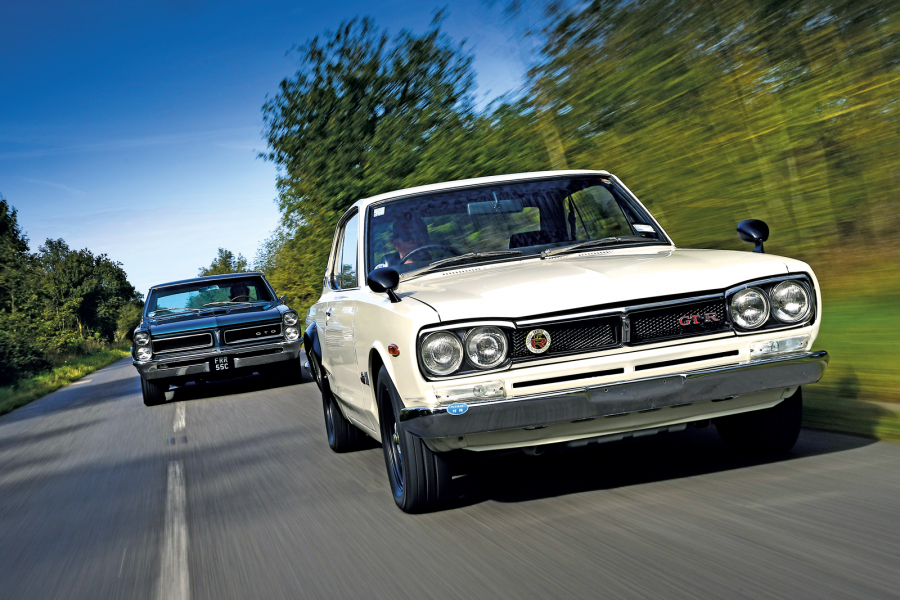AMC Matador (1974-’76)
Dick Teague’s bug-eyed Matador was restyled for 1974 and continued the trend for ‘designer series’ versions: for $299 you could have an Oleg Cassini Matador with orange carpets and black velour trim, while choosing between a selection of anaemic straight-sixes, 304 and 306cu in V8s, and a big-block 401 good for 235bhp, 12 secs to 60mph and 11mpg.
The Chrysler Cordoba gave its maker a lifeline in the 1970s
Chrysler Cordoba (1975-’79)
Chrysler Corp had vowed never to build a junior edition of its senior brand, but relented with the mid-sized Cordoba, which was originally meant to be launched as a Dodge.
Famously advertised by Mexican film star Ricardo Montalbán, its ‘rich Corinthian leather’ was about as real as his hair.
The Cordoba was powered by 5.9- and 6.6-litre V8s, and pretty much kept Chrysler alive in the late ’70s, selling 150,000 examples in 1975 alone.
The Ford Elite was available with a 7.5-litre V8 engine
Ford Elite (1974-’76)
The Elite was built to tackle the wildly successful Monte Carlo, and marketed as a ‘Thunderbird-inspired’ mid-sized luxury coupe.
It was based on the Mercury XR7, with the usual Landau roof and opera window features.
All V8s, from 5.7 to 7.5 litres – the latter seemingly just a way of burning fuel more quickly rather than gaining performance.
Gruesome to look at and little better to drive: even a fresh-faced Tom Selleck’s ads could persuade ‘only’ 366,000 people to buy an Elite before it fell victim to downsizing across Ford’s range.
The Mercury Monarch Ghia Coupe had Ford Mustang underpinnings
Mercury Monarch Ghia Coupe (1975-’80)
A posh version of Ford’s ’75 Granada, the Mercury Monarch was an early downsizing effort to convince buyers that they could have a Euro-look ‘precision’ luxury car for a US-style price, complete with ‘exquisitely proportioned’ styling that featured a Mercedes-like ‘fine grille’.
Beyond the burled walnut appliqué and fake leather, the underpinnings were first-generation Mustang/Falcon, with 302 or 361cu in V8s, or a pair of dire ‘sixes’.
Factfile
Pontiac Grand Prix
- Sold/number built 1973-’77/856,818
- Construction steel body, steel frame
- Engine all-iron, ohv 5798cc V8, two-barrel Rochester carburettor
- Max power 160bhp @ 4000rpm
- Max torque 280lb ft @ 2000rpm
- Transmission three-speed automatic, RWD
- Suspension: front independent, by double wishbones rear live axle, four links; telescopic dampers, coil springs, anti-roll bar f/r
- Steering worm and nut
- Brakes discs front, drums rear
- Length 18ft 12in (5486mm)
- Width 6ft 4in (1829mm)
- Height 4ft 3in (1295mm)
- Wheelbase 9ft 6in (2896mm)
- Weight 4045lb (1835kg)
- 0-60mph 12.8 secs
- Top speed 113mph
- Mpg 13
- Price new $5000
- Price now £15-20,000*
*Prices correct at date of original publication
Enjoy more of the world’s best classic car content every month when you subscribe to C&SC – get our latest deals here
READ MORE
Chrysler Newport Town and Country: wood you believe it?
Cadillac Seville vs Mercedes-Benz 300D: transatlantic oil tankers
Heavy metal thunder: Chevrolet Chevelle, Pontiac GTO, Plymouth SuperBird, Dodge Charger and Ford Torino
Martin Buckley
Senior Contributor, Classic & Sports Car



